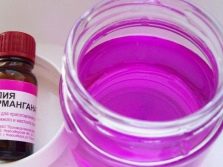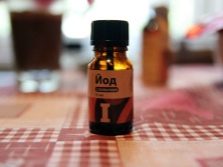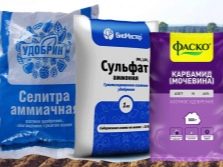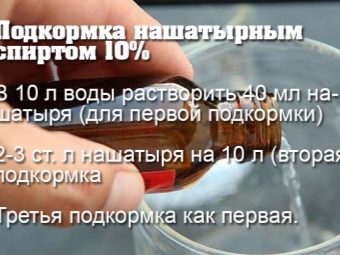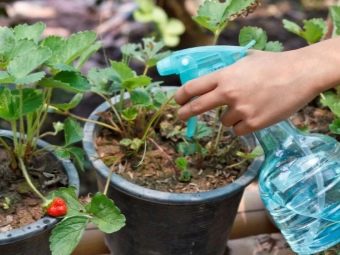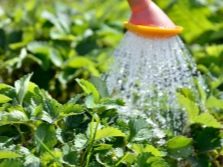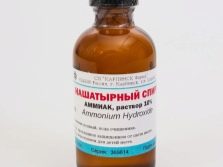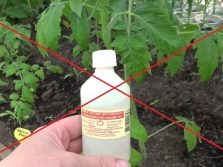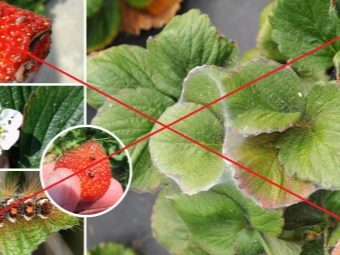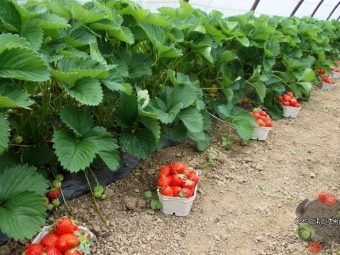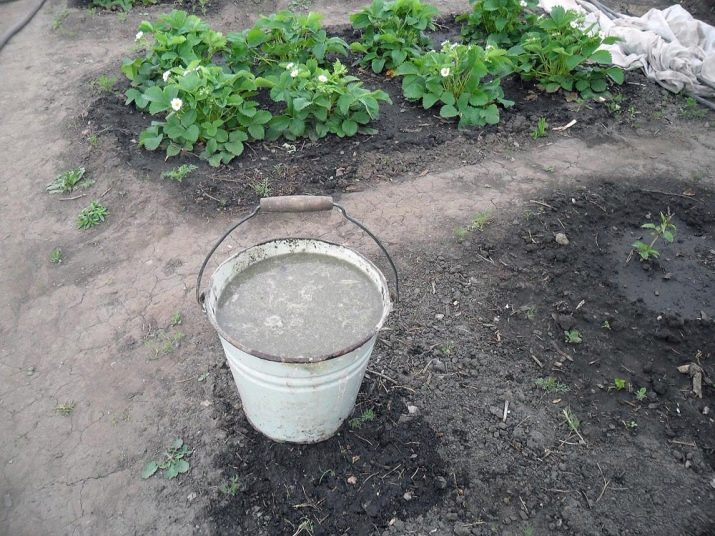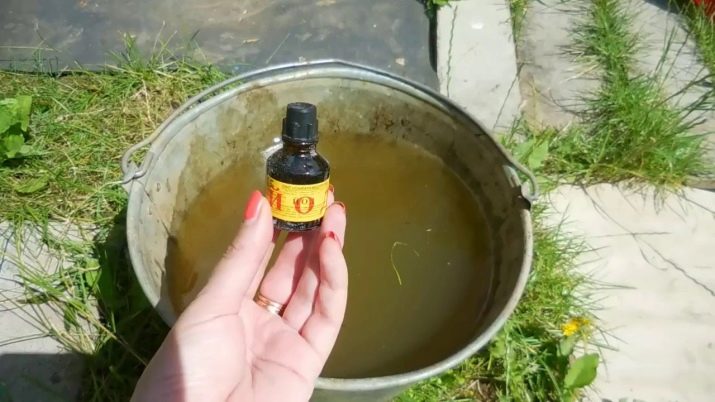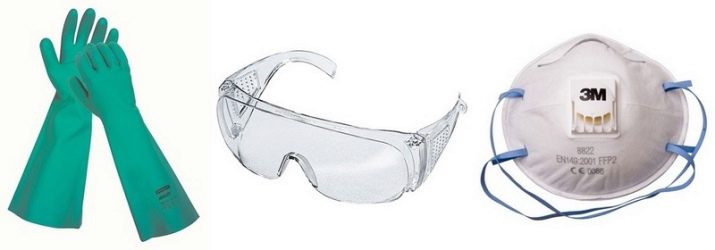Liquid ammonia for strawberries: the benefits and harm, methods of use
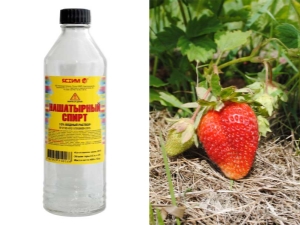
Nowadays, no one, probably, has any problems with the acquisition of a particular drug for strengthening or treating the cultivated crop. But with the development of trends associated with healthy food, gardeners are trying to replace the developed agrochemicals with safer means. And often refusing for one reason or another from popular councils in cultivation, they increasingly resort to using drugs that are available in almost every medicine chest.
Well, for example, it has established itself as a decontamination of potassium permanganate, concentrates based on brilliant green and iodine are gradually replacing wormwood, ash and other substances that, according to popular advice, can strengthen the plant and prevent the appearance of certain diseases. Not an exception is nitrogen-rich ammonia. Nitrogen on a par with potassium and fluorine is one of the most important trace elements for plants, responsible for their growth.
The use of ammonia in gardening is not limited to top dressing: it is used both as a means for treatment and in pest control (here the mulch processed by ammonia has been well-proven).
Composition and properties
So, ammonia is nothing more than a 10% aqueous solution of ammonia, which is a compound of nitrogen with hydrogen. Both nitrogen and hydrogen are essential substances for any organism, and combined in ammonia, they complement each other, which greatly increases their importance. Plants are also a kind of organism, for the growth of which the elements mentioned above are needed, which are usually contained in fertile soil. Poor soil should be fed regularly, otherwise you can not wait for a good harvest.
Dissipated ammonia, in contrast to agrochemicals, can rightfully be considered as a natural top dressing. In addition, its properties are such that it is a good prophylactic against many ailments and pests.
Especially naughty crops like strawberries and cucumbers need ammonia spraying. Strawberries, in comparison with cucumbers, can be called “crystal plants”, which, due to their excessive vulnerability (unless we are talking about hybrids), can be harmed even by improperly chosen fertilizers.
I would like to emphasize once again that in the gardening, ammonia will have a positive effect only with strict observance of the required dosage.
Use and harm of use
If we talk about the effect of ammonia on plants, then with the right approach for strawberries from it will be more good than harm. First of all, not being absorbed into the plant tissue, ammonia cannot alter the taste of almost all strawberries. The same moment allows the use of ammonia concentrate as needed in almost every phase of culture development, since after such procedures the accumulation of nitrates does not occur in the berries. Information for comparison: for safety reasons, the processing of strawberries by some agrochemicals is prohibited with the appearance of the first flower buds.
A drug is used in the garden in the following cases:
- as a nitrogen fertilizer;
- for prevention and treatment in the fight against rot;
- having a specific smell, the substance is used as a means to kill individual pests.
Still, the composition of ammonia includes some substances that, once in the human body, can cause poisoning in large quantities. In this connection, it is desirable to treat strawberries with berries that have already appeared on it with the solution in question only if absolutely necessary. And if such has arisen, then do not panic.
The main thing is to prevent overdose and, after harvesting, to wash the harvested berries with running water with particular care.
Rules of application
That, working with liquid ammonia, does not harm himself and his culture, We recommend to familiarize with some requirements:
- only 10% solution is allowed;
- treatment through watering is appropriate only in spring and autumn, and with the acquisition of a bush of opulence, treatment is carried out only through irrigation;
- it is better to water through a watering can with large streams;
- It is strictly forbidden to process the soil in a greenhouse, hotbeds, as well as the plants contained in them with a liquid solution, since the liquid ammonia evaporates in an enclosed space and does not evaporate, but accumulates, which can lead to poisoning.
For feeding
So, initially ammonia was used as a fertilizer with a shortage of nitrogen. And this is manifested in poor growth of the plant, the foliage becomes small and rare. Nitrogen deficiency of the soil, as a rule, manifests itself in spring. No less damaging to strawberries is an excess of nitrogen in the soil. In this connection, it is desirable to carry out spraying rather than root dressing, which eliminates the possibility of overdose.
After liquid ammonia spraying, it is no longer necessary to fertilize strawberries, as the crop acquires lush, healthy foliage, and active flowering begins, allowing it to achieve high yields. For all this, it is enough to process the plant 3 times per season. It is necessary to feed the culture in the spring, in order to give it strength after hibernation. The second dressing is carried out during the flowering period, pulling a lot of energy out of the culture.
The third dressing is optional, if the strawberry bushes are lush, without yellowing foliage, but it is acceptable during the first harvest. That will allow the plant to give strength for further flowering.
From pests
As it turned out in practice, many flying, ground and underground insects do not tolerate the smell of ammonia: ants, wasps, aphids, and a bear. What allows to apply means as extermination and prevention of defeat by wreckers. Flying and ground insects fight easier because they can always be noticed in time. But with underground pests more difficult, since they do not make themselves known, destroying little by little culture. In this regard, ammonia is of particular value, since it is enough to treat the soil twice a year (after pruning strawberries and in early spring, before lush blooming appears) to destroy or prevent the occurrence of many insects living in it (weevil, larvae of the Maybeetle and others ).
Spraying strawberries with liquid ammonia will help even to get rid of a nematode (leaf and root) that is dangerous both for the plant and for humans, causing various diseases in some and in others.
In addition, it is enough to process the culture once to prevent the appearance of some diseases associated with rot. Of course, if the summer in this case does not turn out to be rainy, because it is in wet weather that the probability of the appearance of rot in different forms of manifestation increases.
How to dilute the solution?
Since ammonia is a rapidly eroding substance, it is recommended to add fatty acids contained in, for example, 72% laundry soap to the solution. Soap foam in this case, settling on the plant, plays the role of a certain barrier that prevents evaporation of the concentrate. At the same time, the sunshine and air needed for strawberries penetrate well through the transparent foam. To prepare a standard solution for 10 liters of water, you will need 1 bar of soap and 10% ammonia, the amount of which depends on the purpose of irrigation (for prevention, add a smaller amount, and for treatment, a larger one).
The maximum allowable amount of ammonia is 40 ml per ten-liter bucket. Such a solution is considered quite strong and is allowed to be used only in spring and autumn (after trimming the bush for winter preparation), when the goal is not so much to enrich the strawberries as to destroy the insects originating in the ground. For prophylactic purposes, twenty-five drops per 10 liters of water is enough.
Experienced gardeners add another 3 g of boric acid and 1 g of manganese to 10 liters of water to the traditional recipe for a liquid ammonia solution, which makes it possible to enhance both the strengthening effect and the disinfecting effect.
So that the beneficial substances do not evaporate, we begin to carry out the necessary measures immediately after the preparation of the concentrate.
Terms of application
Top dressing of soil with any substance should not be chaotic, but should be carried out taking into account the climatic features and taking into account the structure of the soil in a pre-designed system. Traditionally, gardeners, as already noted above, carry out feeding in three stages, guided by the so-called period of cultural vulnerability. The first stage is quite possible to carry out in early spring, it is important at this time not to spray, but to water with a watering can. Spring processing of strawberries through watering will, in contrast to irrigation, process the bushes and the soil around them quite rare at this time.
The following procedure is performed during flowering. Here, for three liters of water, only three tablespoons of ammonia are taken. This less concentrated solution, in comparison with the spring treatment, will be quite enough to give the strawberry strength before the appearance of the berries, and once again scare away insects such as ants and wasps.
The third planned stage is made after fruiting, in order to enrich the soil and at the same time disinfect it. In autumn, the same strong concentrate is prepared as in the spring (see above), only five drops of iodine are added to it, which is an antiseptic.
Precautionary measures
And it does not matter at all for what purpose you use ammonia in gardening, it is important that the dosage is properly maintained, and that elementary safety measures are followed in the work with the preparation.
In order to prevent the substance from entering the lungs during long-term work (which is most permissible in windy weather), a respirator or at least a medical bandage should be used. If suddenly after the completion of the work you feel unwell, manifested in nausea, dizziness, it is recommended to clean the body with a glass of milk, with a worsening of condition it would be better to consult a doctor.
To prevent the substance from getting on the skin, be sure to use gloves from the moment the concentrate is prepared until the work is completed. When redness and burning appear on the skin, it is recommended to wash your hands with soap and treat them with Panthenol. If the burning sensation does not stop within an hour, then, most likely, you have received a burn, which will also require the help of specialists.
Pregnant women and people with epilepsy, as well as having problems with the upper respiratory tract should not be allowed to prepare the concentrate.
It is strictly forbidden to experiment with the preparation of the solution, as you can harm both your body and the plant, because there is a chance to burn the culture or lead to accumulation or sedimentation of harmful substances on it. Remember that all measures for the preparation of the solution should be carried out neither in garages, nor in any change houses, but only on the street.
Features of the use of ammonia for strawberries are given below.

